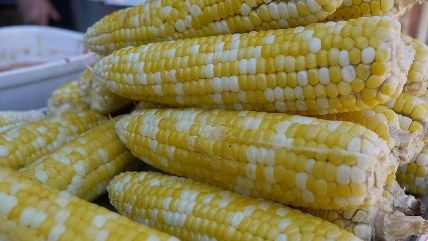Congress Takes Steps to Renew Farm Bill Boondoggle
Taxpayers be warned.


It's Farm Bill time again. And that's too bad.
Perhaps wary of the fact that it took years to pass the most recent Farm Bill in 2014, Congress has already moved to begin deliberations over the next five-year bill, which would likely become law in 2018. The U.S. Senate Agriculture Committee will hold its first hearing on the upcoming Farm Bill in Kansas later this month.
The Farm Bill is perhaps best known for handing billions of dollars of taxpayer money to a small number of the shrinking percentage of Americans who farm. Pres. Franklin Roosevelt's agriculture Henry Wallace pitched payments to farmers during the Great Depression as "a temporary solution to deal with an emergency." The emergency—the Depression—ended around the same year that my grandparents went to prom. But the subsidies remain. In fact, they've only mushroomed in the decades since their adoption.
In the most recent version of the bill, which took effect in 2014, Congress voted to subsidize farmers' purchase of crop insurance. In earlier versions, Congress had forced taxpayers to prop up farmers largely through direct payments.
The move to subsidized crop insurance was supposed to save taxpayers money. But, as I detail in my recent book, Biting the Hands that Feed Us, it's had the opposite effect.
During the most recent debates over passage of a Farm Bill, Sen. Thad Cochran (R-MS) urged support for crop insurance, which he referred to as a set of "important risk management tools for farmers and ranchers nationwide" that "can help reduce costs." Sen. Debbie Stabenow (D-MI), who chaired the Senate Agriculture Committee, of which Sen. Cochran is also a member, lauded the Farm Bill as "an opportunity to cut spending." That's not how it's worked out. Rather, costs have skyrocketed under the new Farm Bill thanks to crop insurance subsidies. In 2011, before crop insurance supplanted direct subsidies, I noted in a Baltimore Sun op-ed that farm subsidies cost taxpayers approximately $15 billion per year. With crop insurance subsidies now having gained favor over direct subsidies, the latest EWG estimates show farm-subsidy payments could reach $30 billion annually by 2018. All of this was predictable. As I wrote in 2014, "the bill taxpayers may foot for crop insurance subsidies . . . may outweigh what taxpayers would have contributed in direct subsidies." So much for reducing costs.
While it's a sure bet to assume that the Farm Bill's costs to taxpayers will continue to rise, we won't know by how much until taxpayers are already on the hook. That's because even in the wake of a Farm Bill's passage, it's difficult to predict the cost of the bill over a period of years, as this recent economic analysis demonstrates.
This uncertainty over exact numbers doesn't mean the next Farm Bill will be any better than the last one. It will be worse, for several reasons. For one, Sens. Stabenow and Cochran still hold seats on the committee. Sen. Stabenow has made clear that "support" for farmers—generally, code for "subsidies"—is a precondition of her vote on the current nominee to head the USDA, the agency that doles out subsidies.
"It is imperative that the next Agriculture Secretary is ready on day one to support our nation's food producers and local communities," she said in a statement last month in the wake of Gov. Sonny Perdue's nomination to serve as secretary of the USDA under the current president.
She's got little reason to worry. Gov. Perdue, notes the Environmental Working Group—a nonprofit that's critical of farm subsides—has himself received farm subsidies.
Then there are the powerful state and national farmers unions. These groups—including the Indiana Farm Bureau, in the home state of current Vice President Mike Pence, a supporter of subsidies—are telling their members that Congress wants their input "about the type of safety net that works best for them."
What else can we expect out of the next Farm Bill? At least one writer has suggested—given Gov. Perdue hails from the South, while recent USDA heads have come from Midwestern states—that subsidies might shift from favoring popular Midwestern crops like corn and soybeans to increasingly backing Southern staples cotton and rice. Payments to the dairy industry may also rise.
I've been critical of farm subsidies for years now, arguing time and again that they should be abolished across the board. And I've got company.
Though farm subsidies find support on the political right and left, so too does principled opposition. Nobel Prize-winning New York Times columnist Paul Krugman called farm subsidies "grotesque," while the conservative Heritage Foundation says they're "so poorly designed that they actually worsen the conditions they claim to solve." The Minneapolis Star-Tribune editors called farm subsidies a "boondoggle… [that] throw[s] money at farmers, whether they need it or not."
Despite these facts, Congress is again set to double down on the boondoggle.




Show Comments (87)